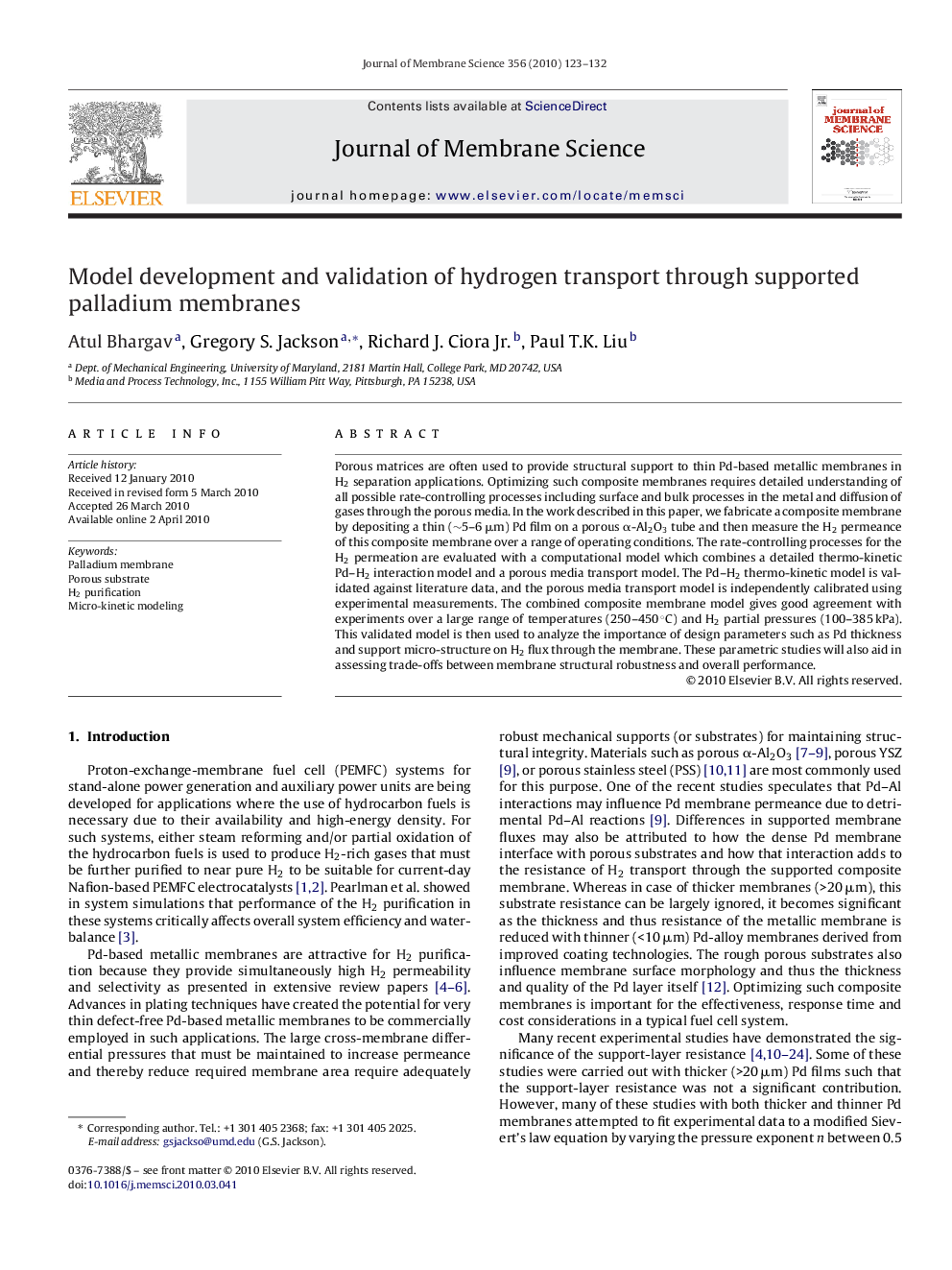| Article ID | Journal | Published Year | Pages | File Type |
|---|---|---|---|---|
| 636394 | Journal of Membrane Science | 2010 | 10 Pages |
Abstract
Porous matrices are often used to provide structural support to thin Pd-based metallic membranes in H2 separation applications. Optimizing such composite membranes requires detailed understanding of all possible rate-controlling processes including surface and bulk processes in the metal and diffusion of gases through the porous media. In the work described in this paper, we fabricate a composite membrane by depositing a thin (â¼5-6 μm) Pd film on a porous α-Al2O3 tube and then measure the H2 permeance of this composite membrane over a range of operating conditions. The rate-controlling processes for the H2 permeation are evaluated with a computational model which combines a detailed thermo-kinetic Pd-H2 interaction model and a porous media transport model. The Pd-H2 thermo-kinetic model is validated against literature data, and the porous media transport model is independently calibrated using experimental measurements. The combined composite membrane model gives good agreement with experiments over a large range of temperatures (250-450 °C) and H2 partial pressures (100-385 kPa). This validated model is then used to analyze the importance of design parameters such as Pd thickness and support micro-structure on H2 flux through the membrane. These parametric studies will also aid in assessing trade-offs between membrane structural robustness and overall performance.
Related Topics
Physical Sciences and Engineering
Chemical Engineering
Filtration and Separation
Authors
Atul Bhargav, Gregory S. Jackson, Richard J. Jr., Paul T.K. Liu,
